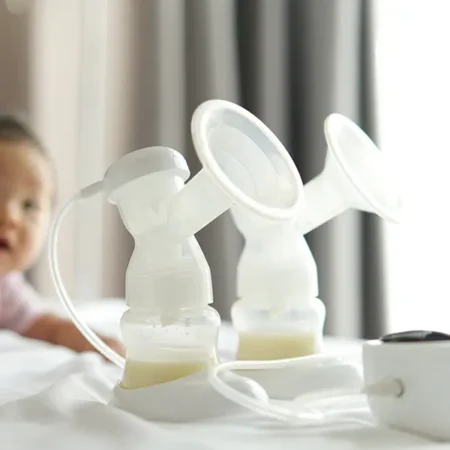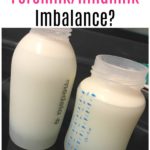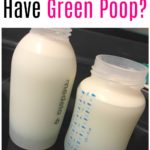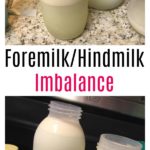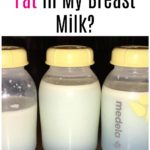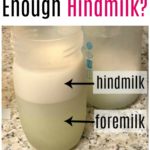After your breast milk has been in the refrigerator for a while, you may notice that it separates, with the fattier milk rising to the top. This breast milk fat separation is totally normal. However, some women worry that they aren’t making enough of the fatty milk. Here’s how to know if foremilk/hindmilk imbalance might be an issue for you, and how to fix it if you’re pumping.
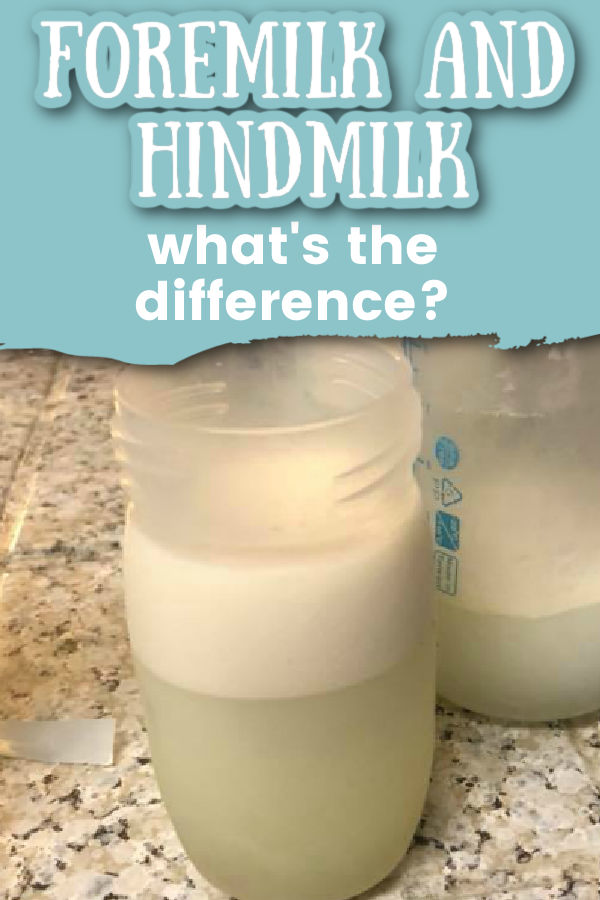
This post may contain affiliate links, which means if you click a link and purchase something, I may make a small commission at no additional cost to you. I only recommend products I love! More information here.
What is foremilk and what is hindmilk?
Foremilk is the milk that flows out of your breasts at the beginning of a pumping session, while hindmilk is the milk from the end of a session.
What is the difference between the two? Because the fatty parts of breast milk tend to stick together, and to the sides of your milk ducts, the milk that is released from your breasts first usually contains less fat and is more watery.
Later, when the breast is more empty, more and more fat begins move out of the ducts and flow out of the breast.
Therefore, the amount of fat in breast milk will gradually increase during a pumping session, and foremilk tends to have less fat than hindmilk.
What is foremilk/hindmilk imbalance?
Foremilk/hindmilk imbalance can occur when a baby mostly fills up on foremilk and doesn’t get much of the fatty hindmilk when he eats.
This can result in the baby taking in too much lactose and not enough fat.
What are the causes of foremilk/hindmilk imbalance?
In babies that nurse, this can happen if the mother has an oversupply or if the baby is frequently switching breasts during a nursing session.
When this happens, baby becomes full from the foremilk and stops eating, so she doesn’t get hindmilk from either breast.
This happens less frequently with exclusive pumpers, because you are feeding your baby a bottle with all of the foremilk and hindmilk mixed together, rather than foremilk first followed by hindmilk.
However, some exclusive pumpers may also struggle with this if they have an oversupply or if their pumping sessions are on the shorter side.
What are some common foremilk/hindmilk imbalance symptoms?
Your baby getting too much foremilk and not enough hindmilk may result in the following symptoms:
- Becoming more fussy than normal
- Having symptoms of colic
- Becoming gassy
- Having green poop
When should you be concerned about an imbalance?
First, I wanted to note that many lactation consultants agree that foremilk/hindmilk imbalance is not very common. (This is a great piece on the subject.)
Parents often worry when they see that their baby has a green stool. However, foremilk/hindmilk imbalance isn’t the only cause of green stools: green poop can be the result of something you ate (green vegetables or something with food coloring), teething, a virus, or starting solids, for example.
My suggestion is to not be too anxious about green poop unless your baby’s poop is consistently green and he is very fussy.
However, if this is the case – most dirty diapers are green over a day or two (and possibly “frothy“) and your baby is not a happy camper, there are some things you can do to try to fix it. (Note: You should call your pediatrician regarding any health concerns that you have for your baby.)
What should you do if you’re exclusively pumping and think foremilk/hindmilk imbalance may be an issue?
There are a few things that you can try.
Pump for longer
If you are concerned that the milk you’re pumping doesn’t have enough hindmilk, one way to increase it is to pump for longer so that you’re pumping when your breasts are emptier. (Remember, the emptier the breast, the fattier the breast milk.)
So, you could try adding a few minutes to each session, or you could drop a session so that that you’re pumping less time but for longer. For example, if you’re doing 8 pumping sessions that are 15 minutes long, you could change your schedule so that you’re pumping 7 times per day for 20 minutes, and see if that helps.
You can also try some strategies to empty your breasts faster.
Keep milk from pumping sessions together
If you are not an oversupplier, you might want to try keeping the milk that you pump from one breast into one single bottle (and make sure that session is long enough that you’re getting hindmilk).
This way, if you pump until you’re fairly empty, you know that you’re combined the foremilk and hindmilk from one session into the one feeding, and it should hopefully have the right amounts. It’s sort of like block feeding for pumping.
Mix all your milk together
Yes, this is the opposite of what I just said! Different things will work for different people, and some oversuppliers find that using the pitcher method (where you put all of the milk you pump into a pitcher and then prep bottles from that) helps them manage issues with foremilk/hindmilk imbalance.
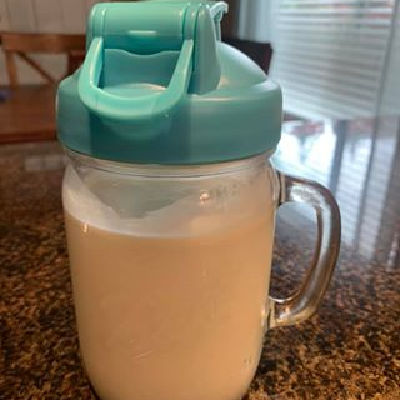
This can be especially helpful if you pump into more than one bottle on a side at some pumping sessions.
Separate out the first ounce
A less optimal option if you have an extreme oversupply (say, you’re pumping over 50-60 ounces per day), and you think you are pumping too much watery milk, you can bring a separate container with you when you sit down to pump.
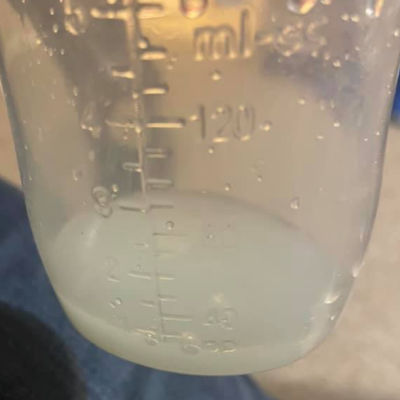
After you pump the first ounce, disconnect your bottles and pour the milk into the separate container. Then, reattach and keep pumping.
Common Foremilk/Hindmilk Imbalance Questions
Here are a few additional common questions.
Should you throw away extra foremilk?
If you decide to separate out of the first ounce or so that you pump as described in the second option above, should you throw it away?
No! Just because it’s watery doesn’t mean it’s any less liquid gold. Some things you can do with it include:
- Mix it your baby’s solid food (if she hasn’t started solids yet, you can freeze it until then)
- Use it in a milk bath
- Make breastmilk jewelry from it
- Make breastmilk lotion or breastmilk soap, etc.

I feel like there is not a big enough layer of fat at the top of my refrigerated bottles. How big should it be?
There is no “correct” amount of separation. The only way to see if there is an imbalance issue is to look at your baby, not your breastmilk.
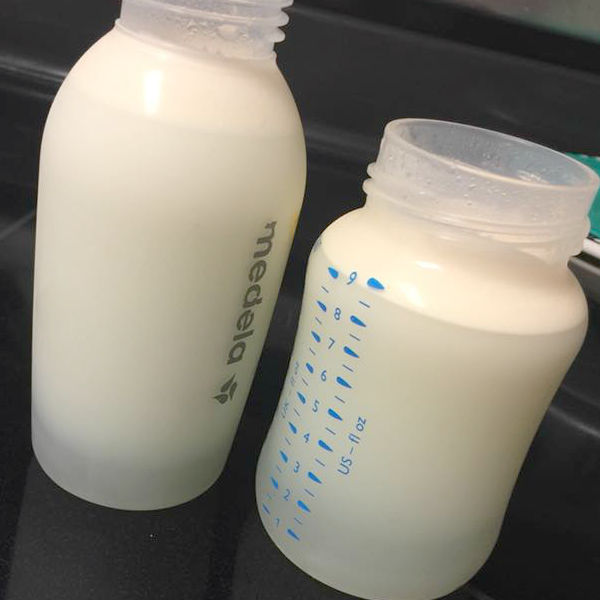
Is she gaining weight appropriately? Is she mostly happy? Are her poops mostly not green? If these are true, then don’t worry about what the breast milk fat separation looks like the in the fridge.
How can I tell if my issue is foremilk/hindmilk imbalance or dairy allergy?
Because the symptoms are very similar, it can be hard to know which is causing your baby to be unhappy. It’s a good idea to speak to your pediatrician about this.
If your pediatrician recommends it, you can try cutting out dairy and see if that helps. Or, if she believes that is not the issue, you can try to correct the possible foremilk/hindmilk issue (by using one of the four options listed above, if you’re an exclusive pumper).
I wouldn’t recommend doing both things at once, though, because if and when things improve, you won’t know which change did it and what the underlying issue was.
Have you dealt with foremilk/hindmilk imbalance? Or been worried about green poop? Tell us about it!
References- Bonyata, Kelly, IBCLC. “Foremilk and hindmilk – what does this mean?” https://kellymom.com/bf/got-milk/basics/foremilk-hindmilk/
- Breastfeeding Problems. “Foremilk Hindmilk Imbalance.” https://www.breastfeeding-problems.com/foremilk-hindmilk-imbalance.html
- Kellymom. “Mother-2-Mother Concerns: Green Stools.” https://kellymom.com/mother2mother/m2m-green-stools/
- Madden, Katie, RN, IBCLC. “‘The Good Milk’ Foremilk/Hindmilk.” https://balancedbreastfeeding.com/the-good-milk-foremilkhindmilk/
